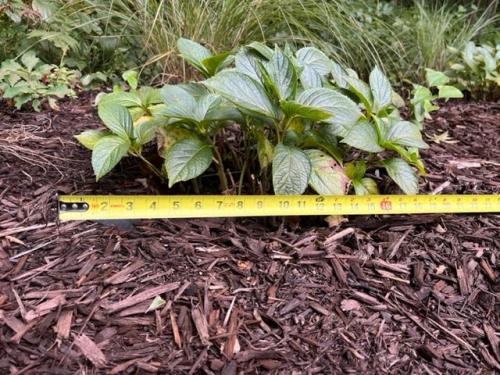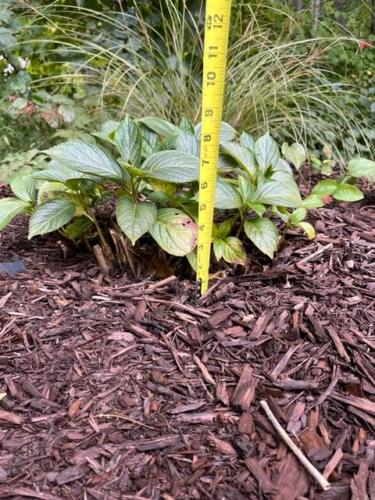Sorry for the delay. I have four legged visitor that I am having to babysit and monitor.
As previously mentioned, to produce the spring blooms, the stems need to survive and apparently winter is killing them, are fertilizing too late in the fall or you are pruning stems after flower buds develop inside the ends of the stem in July-August. To avoid pruning them too early, you can simply wait until the end of June (or even in July) to prune dead wood if you wish. You can also use the scratch method to confirm the status of the stems but this when they should be very slowly breaking dormancy and getting some moisture flowing through their system again, not in very early spring. Sa, mid-May? If the result is that the stems are definitely not surviving, you can try chicken wire around the plant and fill it with mulch. The aim is to protect the stems, specifically the ends of the stems. I keep the chicken wire away from the shrub horizontally and vertically b. With your cold winters, maybe 6 inches or more in either direction will help protect things. I fill them with either composted hay or mulch. The hay tends to fly off and settle so I add more in mid-winter and top it with cardboard so it does not fly off. Mulch is now being used more often as it does not fly off as easily as composted hay does. Both of them then get re-used as mulch around the hydrangeas and other plants in spring.
To produce the summer blooms, the plant needs to get tall enough to produce blooms before the end of the season. It should do that as soon as the stems are close to its estimated height of 4 feet but, the shrubs in the picture clearly indicate that they are not close to that height. That suggests to me that another rebloomer variety that does not grow as tall is required. By that, I would look for varieties that are advertised to reach a height of only 1-2 feet.. If the plant info says that the rebloomer has a height of 3-4 or 3-5, do not select those. Examples previously mentioned: some of the Let's Dance varieties (Sky View, Starlight, Blue Jangles, Rave), some of the Everlasting varieties or the varieties of the Tuff Collection, which all consist of mountain "serrata" hydrangeas.
Having said that, another person in PA that was having blooming issues, mentioned to me that he changed his fertilizing program to force more growth and get successful blooms from the late summer/fall flush Big Leaf rebloomers. Aside from locating the plants with lots of sunlight exposure + maintaining a minimum of 2" of organic mulch + trying to maintain the soil always moist (things that would promote growth), he put them in a high-phosphorus diet. Right after the last freeze in spring (for Grand Haven, this falls around the 2nd-3rd weeks of May), he immediately applied a 10-10-10 slow release fertilizer only once. Afterwards, he applied 1-2 doses of a quick release fertilizer (Superbloom or one with a NPK Ratio of about 12-55-6) in June and July but, do not apply them close to the 2nd-3rd weeks of October in Grand Haven, which is when your first frost typically "appear". In between or after the Supplerbloom applications, he sprinkled coffee grounds from Starbucks until about a month before early frosts. Also, starting from new growth, he pinched growing tips every foot or so to encourage branching (which he says doubles the bloom count this or the following season for him). So, you are welcome to try that to see if that makes them grow taller and trigger blooms.
Alternatively, you can use shorter rebloomers or for more reliable blooms, use Smooth Hydrangeas like the Invincibelle Series: Lace, Limetta, Mini-Mauvette, Ruby, Spirit or Spirit II, Sublime, Wee White; as well as the Incrediball Series: Incrediball or Incrediball Blush; or the Mountain Hydrangeas in the Tuff Series: Tuff Stuff, Tiny Tuff Stuff, Tuff Stuff Ah-ha, or Tuff Stuff Red. These can be found at provenwinners.com or locally and should be winter hardy to z3 and very bloom reliable.

